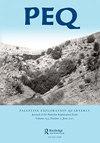To Flip or not to Flip
IF 0.8
2区 历史学
0 ARCHAEOLOGY
引用次数: 28
Abstract
Several decades ago, when I was a postgraduate student, I was confronted with the wellknown pitfalls of relying too heavily on coins when assigning dates to archaeological loci/contexts. I was trying to make sense of the stratigraphy of the Byzantine period at the Transjordanian site of Tell Hesban (now transliterated Tall Hisban) and in the process encountered numerous coins with findspots accurately recorded. Several archaeologists had been very generous with their use of numismatic evidence to narrow the chronological horizons in multiple excavations in Transjordan. But even in the 1970s and 1980s it was commonly accepted that the obvious chronological use of a coin was to provide a secure terminus post quem date. The reason is obvious. Numismatists can often identify the mint date of a coin if it is sufficiently legible, and this date can at times be even a particular time of a given year. It is not difficult to see how such an accurately datable tool at times became misused in a field of study that was more or less obsessed with chronology. But the date of the placement of a coin must be determined by the locus/ context where it is found; the coin does not date that locus/context. Since it is often difficult in the process of excavation to know whether the date of a coin coincides with the date of the locus/context where it was found, one must question whether it is ever safe to use coins to verify dates other than a terminus post quem. This leads to the question whether it can be shown objectively that coins provide an acceptable or unacceptable means of dating their findspots. In an attempt to answer this question, the numismatic evidence from two sites—Tell Hesban 1968–1976 and Pella 1967—were subjected to a simple statistical test, the Binomial Probability Calculator test. This test conducted in collaboration with my colleague, James K. Brower, provided a more objective measure of the reliability of using numismatic evidence as a safe indicator of findspot dating. There are many situations where a test has only two possible outcomes, true or false (yes or no). For example, in flipping a coin one would expect one of two outcomes—heads, or tails. Or, given a coin that has been excavated; it can either date its findspot accurately, or not date it accurately. Associated with such situations is a ratio which represents the expected frequencies of occurrence of each of these possible outcomes. In other words, under a given theory of operation for the situation under study, one outcome will be expected a certain percentage of the time, while the rest of the time the other outcome will be expected. This is the binomial probability. The reliability of coins as a means of dating their findspot could be determined absolutely only by excavating all coins at all sites and then comparing their mint dates with the dates of the findspot locus/context as established by other means and tallying the results. This kind of an examination of the total population of coins is, of course, impossible, and therefore an alternate method must be followed. All of the Tell Hesban data had previously been digitized and it was a relatively simple task to get a printout of the legible coins that had been excavated in the five seasons of work at the site. There were 256 legible coins. Dating their findspots by alternate means, primarily翻转还是不翻转
几十年前,当我还是一名研究生时,我遇到了一个众所周知的陷阱,即在为考古地点/背景指定日期时过于依赖硬币。我试图在特尔赫斯班(Tell Hesban,现在音译为Tall Hisban)的Transjordanian遗址了解拜占庭时期的地层,在这个过程中,我遇到了许多准确记录了发现点的硬币。在外约旦的多次发掘中,几位考古学家非常慷慨地使用钱币证据来缩小时间范围。但即使在20世纪70年代和80年代,人们也普遍认为,硬币明显的按时间顺序使用是为了在女王时代后提供一个安全的终点。原因是显而易见的。钱币学家通常可以识别硬币的铸造日期,如果它足够清晰,这个日期有时甚至可以是一年中的特定时间。不难看出,在一个或多或少痴迷于年表的研究领域,这样一个可准确数据化的工具有时是如何被滥用的。但硬币的放置日期必须由发现硬币的地点/背景决定;硬币没有注明那个地点/背景的日期。由于在挖掘过程中通常很难知道硬币的日期是否与发现地点/背景的日期一致,人们必须质疑使用硬币来验证除终点后的日期之外的日期是否安全。这就引出了一个问题,即是否可以客观地证明硬币提供了一种可接受或不可接受的方法来确定其发现地点的年代。为了回答这个问题,来自两个地点的钱币证据——Tell Hesban 1968–1976和Pella 1967——接受了一个简单的统计测试,即二项式概率计算器测试。这项测试是与我的同事詹姆斯·K·布劳尔合作进行的,它为使用钱币证据作为发现点年代测定的安全指标的可靠性提供了一个更客观的衡量标准。在许多情况下,一项测试只有两种可能的结果,正确或错误(是或否)。例如,在掷硬币时,人们会期望两种结果之一——正面或反面。或者,给定一枚已被挖掘的硬币;它可以准确地确定其findspot的日期,也可以不准确地确定日期。与这种情况相关的是一个比率,它代表了每种可能结果的预期发生频率。换言之,根据所研究情况的特定操作理论,在一定比例的时间内,一个结果是预期的,而在剩余时间内,另一个结果将是预期的。这是二项式概率。只有挖掘所有地点的所有硬币,然后将其铸造日期与通过其他方法确定的发现地点/背景的日期进行比较,并对结果进行统计,才能绝对确定硬币作为确定发现地点年代的手段的可靠性。当然,这种对硬币总数的检查是不可能的,因此必须采用另一种方法。Tell Hesban的所有数据此前都已数字化,打印出在该遗址工作的五个季节中挖掘出的字迹清晰的硬币是一项相对简单的任务。有256枚可辨认的硬币。通过其他方式确定他们的发现地点,主要是
本文章由计算机程序翻译,如有差异,请以英文原文为准。
求助全文
约1分钟内获得全文
求助全文

 求助内容:
求助内容: 应助结果提醒方式:
应助结果提醒方式:


